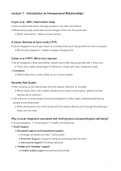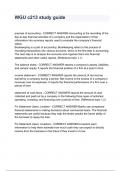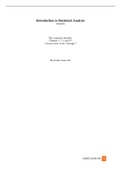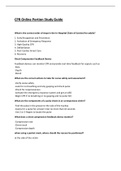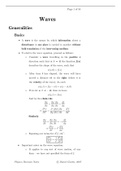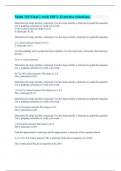PHYS204 – Physics for Scientists and Engineers I
Lab Manual V2.0
Experiment 6: The Atwood Machine
, Experiment 6: The Atwood Machine
INTRODUCTION
The purpose of this lab is to investigate and analyze the workings of the Atwood Machine.
This machine was invented in 1784 by George Atwood for experiments involving classical mechanics. Since then,
slight variations of his invention have been used in elevators, gondolas, alpine chairlifts, and funicular railways.
It consists of two masses hung over a pulley by a rope; in an ideal situation, the pulley and the string have minimal
friction and weight, and the rope does not stretch, so that any acceleration that takes places is attributed purely
to any changes in the masses. The simple design of the Atwood Machine is used in various applications so that
much less energy is needed to accelerate the masses on either end of the rope. Gravity, along with manipulations
of the masses, will cause acceleration and movement in the desired direction.
A diagram has been provided below of the experiment setup. This diagram shows that on each mass, there is the
force of tension exerted by the string acting upwards, and the force of gravity acting downwards. The tension on
both sides of the diagram are the same if we model the pulley as frictionless and massless. The force of gravity
depends on the magnitude of the masses.
In addition, positive and negative signs must be attributed to the calculations for acceleration, so in this
experiment, the acceleration on the left side, acting upwards, will be positive, and the acceleration on the right
side, acting downwards, will be positive.
⃑
T
⃑
T
+
m1
m2
𝑚2
m1 g⃑ +
𝑚1 m2 g⃑
Fig.1. – The Atwood Machine
Mathematically, the device used in this experiment can be represented using Newton’s Second Law:
Net force of mass #1 = ΣFy = m1 g⃑ − T⃑ = m1 a⃑𝑦
(net force of heavier mass = gravitational force minus tension is equal to mass × acceleration)
Net force of mass #2 = ΣFy = ⃑T − m2 g⃑ = m2 a⃑𝑦
(net force of lighter mass = tension minus gravitational force is equal to mass × acceleration)
In this experiment, the moment of inertia will also be discussed, where “I” is the moment of inertia of the pulley,
“R” is the radius of the pulley, “a” is the acceleration experienced by mass #1, and “α” is the angular acceleration.
Lab Manual V2.0
Experiment 6: The Atwood Machine
, Experiment 6: The Atwood Machine
INTRODUCTION
The purpose of this lab is to investigate and analyze the workings of the Atwood Machine.
This machine was invented in 1784 by George Atwood for experiments involving classical mechanics. Since then,
slight variations of his invention have been used in elevators, gondolas, alpine chairlifts, and funicular railways.
It consists of two masses hung over a pulley by a rope; in an ideal situation, the pulley and the string have minimal
friction and weight, and the rope does not stretch, so that any acceleration that takes places is attributed purely
to any changes in the masses. The simple design of the Atwood Machine is used in various applications so that
much less energy is needed to accelerate the masses on either end of the rope. Gravity, along with manipulations
of the masses, will cause acceleration and movement in the desired direction.
A diagram has been provided below of the experiment setup. This diagram shows that on each mass, there is the
force of tension exerted by the string acting upwards, and the force of gravity acting downwards. The tension on
both sides of the diagram are the same if we model the pulley as frictionless and massless. The force of gravity
depends on the magnitude of the masses.
In addition, positive and negative signs must be attributed to the calculations for acceleration, so in this
experiment, the acceleration on the left side, acting upwards, will be positive, and the acceleration on the right
side, acting downwards, will be positive.
⃑
T
⃑
T
+
m1
m2
𝑚2
m1 g⃑ +
𝑚1 m2 g⃑
Fig.1. – The Atwood Machine
Mathematically, the device used in this experiment can be represented using Newton’s Second Law:
Net force of mass #1 = ΣFy = m1 g⃑ − T⃑ = m1 a⃑𝑦
(net force of heavier mass = gravitational force minus tension is equal to mass × acceleration)
Net force of mass #2 = ΣFy = ⃑T − m2 g⃑ = m2 a⃑𝑦
(net force of lighter mass = tension minus gravitational force is equal to mass × acceleration)
In this experiment, the moment of inertia will also be discussed, where “I” is the moment of inertia of the pulley,
“R” is the radius of the pulley, “a” is the acceleration experienced by mass #1, and “α” is the angular acceleration.

